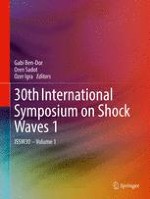2017 | OriginalPaper | Buchkapitel
The Collapsing Mechanism of Aluminum Foams
verfasst von : Oren Sadot, I. Anteby, S. Gruntman, O. Ram, Gabi Ben-Dor
Erschienen in: 30th International Symposium on Shock Waves 1
Aktivieren Sie unsere intelligente Suche, um passende Fachinhalte oder Patente zu finden.
Wählen Sie Textabschnitte aus um mit Künstlicher Intelligenz passenden Patente zu finden. powered by
Markieren Sie Textabschnitte, um KI-gestützt weitere passende Inhalte zu finden. powered by
